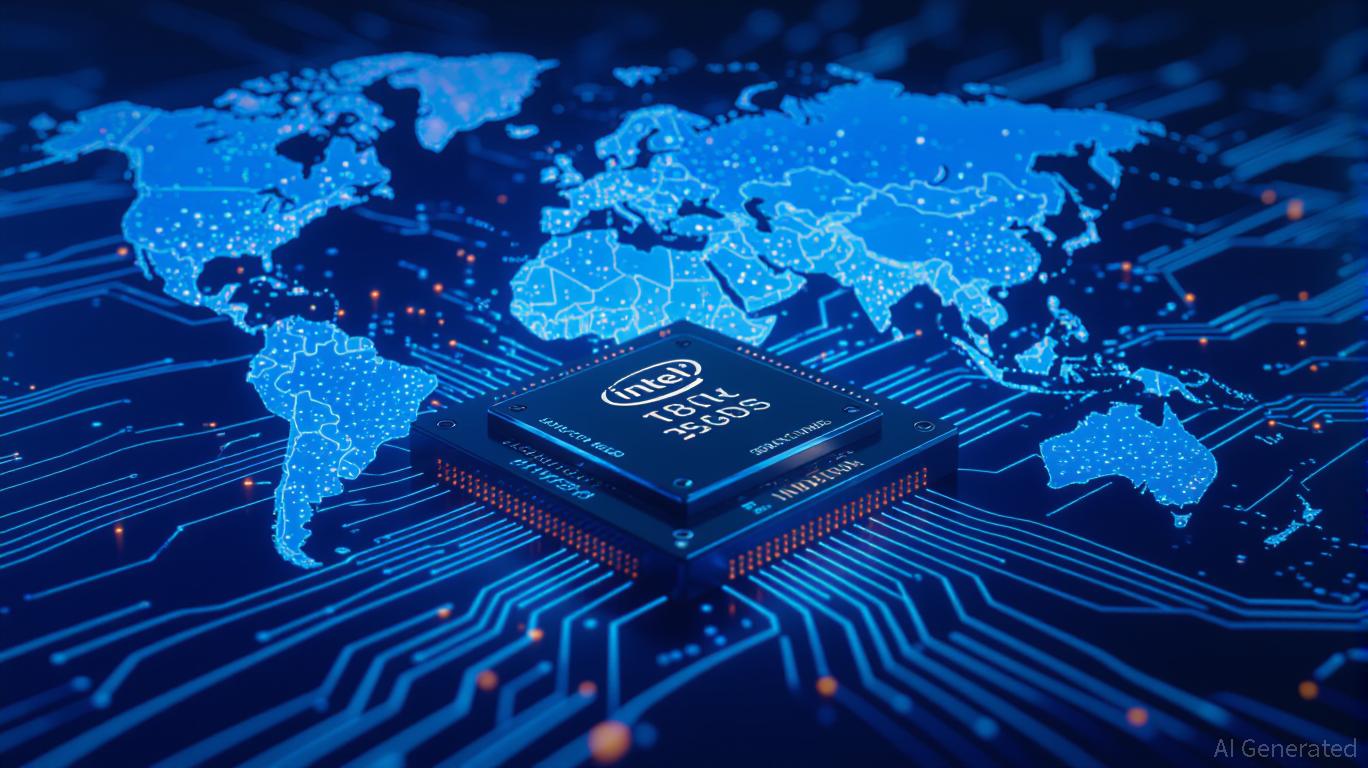
In 2025, Intel finds itself at a crossroads, navigating a volatile landscape defined by geopolitical tensions, leadership controversies, and the relentless pace of technological innovation. The company’s strategic trajectory under CEO Lip-Bu Tan has drawn sharp scrutiny, particularly as it grapples with the dual imperatives of financial discipline and geopolitical alignment. For long-term investors, the question is whether Intel can reconcile these challenges while maintaining its relevance in a semiconductor industry increasingly shaped by national security imperatives.
Leadership and Governance: A Tenuous Balance
Tan’s leadership strategy has prioritized cost-cutting and operational efficiency, a stark departure from the capital-intensive approach of his predecessor. A 15% workforce reduction (75,000 employees by year-end), the cancellation of European expansion projects, and a slowdown in U.S. factory construction reflect a “demand-driven” model aimed at stabilizing Intel’s balance sheet. While these measures have reduced short-term financial risk, they raise concerns about the company’s ability to compete with TSMC and Samsung in the race for advanced node manufacturing. The cancellation of the Falcon Shores AI chip and delays in the Jaguar Shores project underscore the tension between fiscal prudence and innovation.
However, the most pressing issue lies in Tan’s leadership controversies. U.S. President Donald Trump’s public demand for Tan’s resignation over alleged ties to Chinese semiconductor startups—some linked to the People’s Liberation Army—has exposed governance vulnerabilities. Senator Tom Cotton’s scrutiny of Tan’s investments and past affiliations has further intensified concerns about Intel’s alignment with U.S. national security priorities. These controversies have not only triggered a 3% stock price drop but also highlighted a board that has historically prioritized short-term gains over long-term strategic alignment.
Geopolitical Exposure: A Double-Edged Sword
Intel’s exposure to China remains a critical risk. Despite receiving $8 billion in CHIPS Act subsidies to bolster domestic production, the company continues to invest in Chinese AI and semiconductor startups, including a $1.5 billion stake in Tsinghua University, an institution with close ties to the Chinese military. These decisions, approved by Intel’s board, have drawn sharp criticism for potentially compromising U.S. technological sovereignty. The 2025 National Defense Authorization Act (NDAA) now imposes stricter supply chain oversight on companies with adversarial ties, complicating Intel’s ability to balance global investments with U.S. security mandates.
Meanwhile, the Trump administration’s proposed 100% tariffs on imported semiconductors could force Intel to accelerate domestic production, straining already tight margins. The company’s reliance on gallium and germanium—materials subject to Chinese export restrictions—introduces another layer of supply chain vulnerability. While U.S. export controls on advanced nodes may temporarily benefit Intel by limiting TSMC’s access to Chinese markets, the long-term risks of overdependence on a single supplier remain unresolved.
Operational Realities: Progress Amid Uncertainty
Intel’s Q2 2025 financials reveal a mixed picture. Revenue of $12.9 billion exceeded expectations, but GAAP earnings fell to $(0.67) per share due to $1.9 billion in restructuring charges. The gross margin dropped to 27.5% from 35.4% in 2024, reflecting the financial burden of its transformation. Progress on the 18A and 14A manufacturing nodes—critical for AI and high-performance computing—is promising, with the 18A node now in high-volume production. However, it remains 30% more expensive than TSMC’s N3 node, limiting its competitiveness.
The foundry business, a cornerstone of Intel’s turnaround, reported a $3.17 billion operating loss despite a 3% revenue increase. Analysts project breakeven by 2027 if Intel secures high-margin contracts with hyperscalers like Microsoft and Amazon. The Data Center and AI segment saw a 4% revenue increase, but Intel’s Gaudi 3 accelerator lags behind NVIDIA’s H100 in market adoption.
Investment Implications: A Calculated Hold
For investors, the key question is whether Tan’s restructuring can stabilize Intel’s operations while enabling long-term growth. The company’s stock trades at a 20% discount to its 2023 peak, reflecting skepticism about its near-term prospects. Of 37 analysts covering Intel, 31 maintain a “Hold” rating, with an average price target of $22 (4.97% below the current $23.10).
A “Hold” recommendation is prudent for now, as the path to profitability hinges on three critical factors:
1. 18A/14A Node Success: If these processes gain traction, Intel could secure high-margin foundry contracts and regain AI market share.
2. Geopolitical Alignment: Resolving scrutiny over Tan’s leadership and demonstrating compliance with U.S. security regulations will be vital for maintaining government contracts.
3. Operational Discipline: Sustaining cost-cutting while investing in R&D will determine whether the “Smart Capital” strategy delivers long-term value.
Conclusion: A High-Stakes Gamble
Intel’s strategic crossroads under Lip-Bu Tan reflect a high-stakes gamble in a semiconductor industry defined by geopolitical and operational turbulence. While the CEO’s focus on financial discipline has stabilized short-term finances, the long-term success of his strategy depends on executing on advanced nodes, securing AI design wins, and resolving leadership controversies. For investors, the semiconductor industry’s Darwinian nature means that Intel has no room for error. A cautious, long-term approach is warranted, with a focus on key milestones in 2025–2027. If Tan can deliver on these fronts, Intel may yet reclaim its position as a semiconductor leader—but the path will be fraught with challenges.
